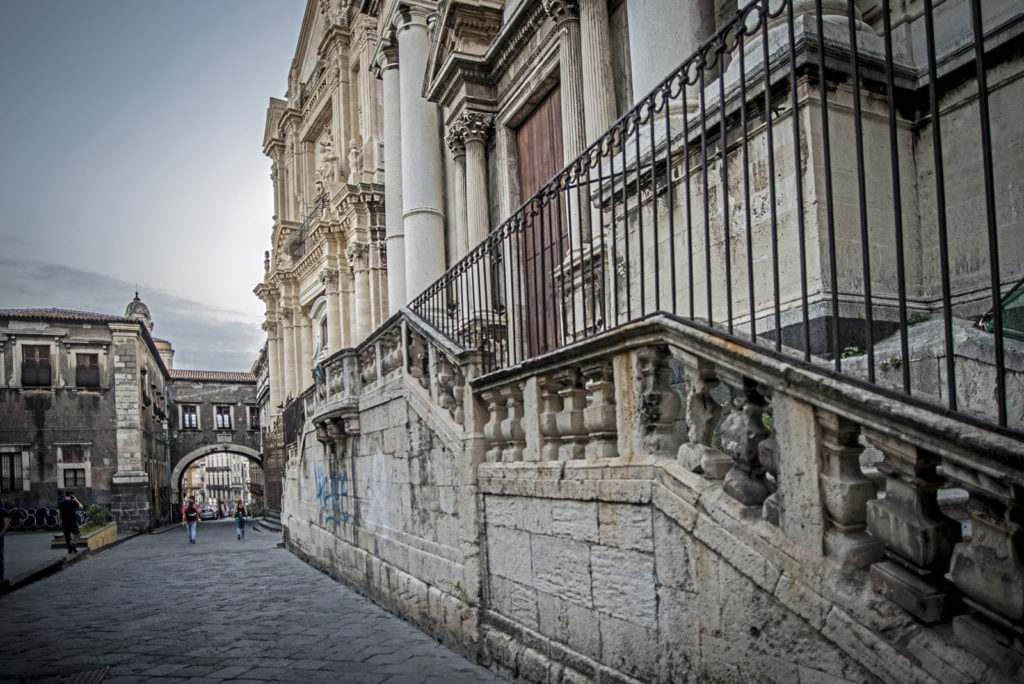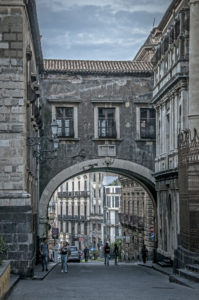The church of San Benedetto (St. Benedict), considered one of the best examples of late Baroque in Catania, is located inside the historic monastery at the beginning of Via dei Crociferi.
 It is the other largest convent complex of the Benedictine nuns and their current residence.
It is the other largest convent complex of the Benedictine nuns and their current residence.
It is said that the superb arch that opens onto the street was built in one night to unite the two monasteries and connect the abbeys, following the earthquake in 1704.
 The grandeur that emanates from this place inspired
Giovanni Verga
The grandeur that emanates from this place inspired
Giovanni Verga
‘s “Storia di una Capinera” (Story of a Blackcap) and Franco Zeffirelli’s film adaptation (Sparrow) set in Via dei Crociferi.
The monastery of San Benedetto originated from the remains of a Roman domus dating back to imperial times, the remains of which were discovered during restoration work.
One of the most fascinating elements of the cloistered monastery, where the Benedictine nuns practised a characteristic form of
devotion
, is the parlour, the only place where the nuns could have contact with the outside world.
In this room, concealed by thick black grating, they were allowed to talk to their relatives.
The room’s floor, preserved in its original state, dates back to the 14th century and is made of terracotta and limestone. It also has geometrically shaped decorations typical of the Arab-Norman period, created by the intersection of several depictions joined together. The main element is the symbolic eight-pointed star repeated in the geometric flooring and which represents the sacred centre par excellence.